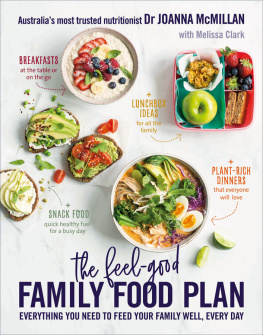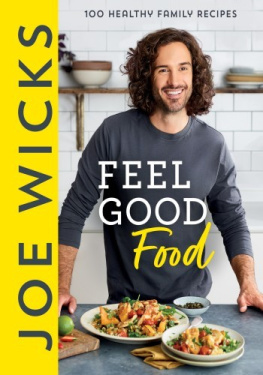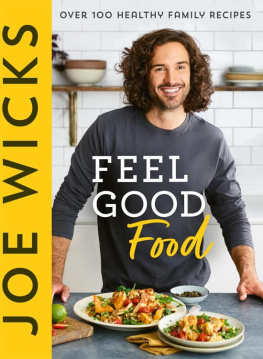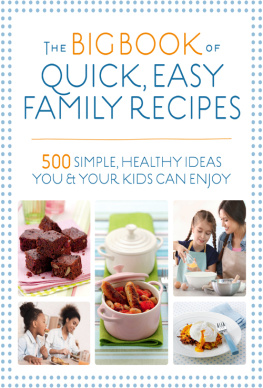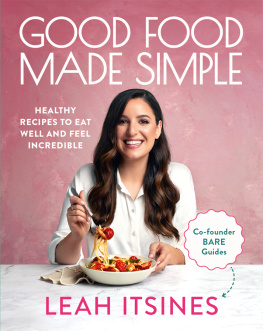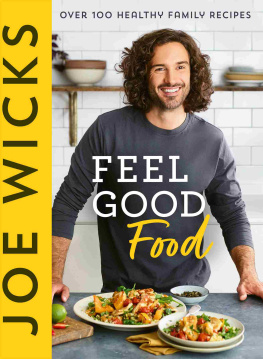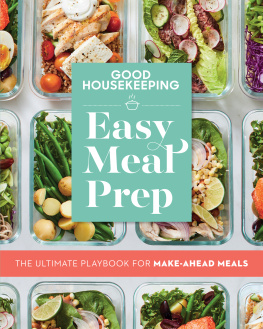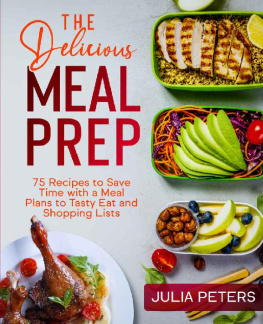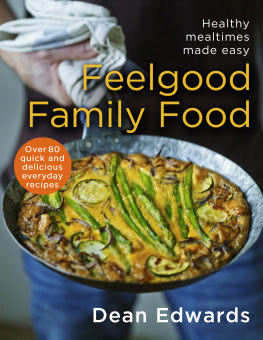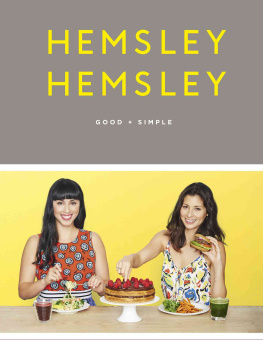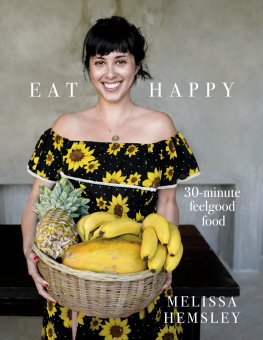
Packed with simple solutions, easy-to-follow advice and expert tips, The Feel-Good Family Food Plan does the thinking for you, so you get delicious home-cooked food on the table, even on the most hectic of work and school days.
| > | 60 weeknight dinners the whole family will love. |
| > | 4 weeks of meal plans take the stress out of shopping and cooking. |
| > | Great ideas for getting the kids involved in the kitchen. |
| > | Plant-rich meals to encourage good eating habits for life. |
| > | Ideas for fussy eaters and getting kids to love vegies. |
| > | Quick healthy breakfasts, lunch boxes and snacks, for fuel on the run. |
| > | Tips for savvy shopping, storing and freezing. |
DR JOANNA McMILLAN is a PhD qualified Nutrition Scientist and Accredited Practising Dietitian. Born in Scotland, she is now one of Australia's favourite and most trusted health and wellbeing experts. Joanna is a regular on television, most recently hosting the ABCs series Gut Revolution and Beating Diabetes ; she is also a regular commentator on Channel 9's Today Show .
Co-author Melissa Clark is a professionally trained caterer who makes really delicious food for companies, for private clients, and for friends and family.

CONTENTS
Our goal is for you to feel confident that you can feed your family delicious, nutritious meals... and for food to be a pleasurable part of your family life.
WHAT IS A HEALTHY DIET?
WHY THE CONFUSION?
The purpose of this book is to give you the confidence to know that you are feeding your family as best you can, the tools to help you deal with the many difficult food situations that can arise, the tricks to making mealtimes easier and within budget while minimising food waste, and the inspiration to make food a pleasurable and delicious part of your family life.
Before we look at what constitutes a healthy diet, lets first address why there is so much confusion over defining healthy eating by looking at the example of eggs. As I was writing this book, I was contacted by a journalist about a study that had just been published, which called back into question the healthfulness of eggs.
Eggs were out in the days of low-cholesterol eating, back in the 1970s and early 80s, only to be later exonerated as newer research showed that dietary cholesterol really didnt have too much effect on blood cholesterol. Then, as low-carb diets rotated back into fashion (thats right, theyre not new!), eggs were all the rage for breakfast. And now a new study has come along that claims that the more eggs people eat, the higher their risk of heart disease!
If you are one of those to throw up your hands in frustration and feel even more confused as to what to feed your family, let me reassure you of this fact: we really do understand how to best feed the human race. Its not all that complicated, although it can be hard to execute for all sorts of reasons. Nutrition research might still be debating and studying the nuances and finer details, but the big picture is clear. Dont allow sensationalist media headlines to distract you from this fact.
THE FOUNDATIONS OF A HEALTHY DIET
Back to eggs. If you love them, rest assured that we use them frequently in this book. Eggs are a whole food, delivering an impressive array of nutrients, and so I continue to count them as a wonderfully nutritious food for your family.
The different research results highlight just how tricky studying diet can be. Think of the different ways you could eat eggs. Do you eat them fried in refined seed oil, a potential source of harmful trans fats? Do you eat them with bacon, sausages or other processed meats? As part of a big breakfast with hash browns and buttered white bread? Scrambled with loads of cream? Or do you poach or boil them and have them with avocado toast, or as an omelette with spinach, mushrooms and other vegies? You can see that these different ways of eating eggs have different potentials to impact health. This makes it really, really hard to look at that food in isolation.
Your dietary pattern is what determines the overall quality of your diet.
Ultimately, what is important is your dietary pattern or the way you put foods together the overall variety of foods that you consume from week to week, and the balance of different foods that ensure you get all of the nutrients you need.
Recognise that there are many ways to put together a healthy diet. What works for one person might not be right for another, but we do all share the same foundations. So choose a diet of whole foods, including plentiful plants (whether or not you choose to also consume animal foods), with minimal (or no) ultra-processed food.
A TEMPLATE FOR HEALTHY EATING
I developed the Dr Joanna Plate over years of working with clients to help them build a visual image of how to balance different foods at each meal. In essence, the Plate is your foundation to start building a healthy diet for your own family. Pictured opposite are four versions of the Plate. For adults, aim for half of the plate to be vegies, a quarter of the plate a protein-rich food and a quarter of the plate a smart carb, and then add a healthy fat (e.g. use extra virgin olive oil for cooking). For teens and younger kids who need a more energy-dense meal, the division is a third for each category, again with a healthy fat-rich food added.
The Plate isnt set in stone because flexibility is key. Everyones dietary needs are different sometimes very different. Little kids have smaller tummies and need to eat more energy-dense meals and, since they cant eat as much in one go, they also need to eat more often. Very active teenagers with a heavy sports load need a bigger Plate for starters, but they will also need more smart carbs to fuel their activity. A sedentary dad or mum who spends much of their day at a desk doesnt need such a high level of carbohydrate for fuel and is much more likely to need to control their energy intake to maintain a healthy weight. For them, loading the Plate with vegies will help keep the kilojoules down, while keeping up the nutrients and volume of food.
The beauty of the Plate is that you can use it to put together a meal at home or to choose from a restaurant or takeaway menu. Thats important because, although I encourage families to prepare most meals at home, most of us eat out more than generations past. And lets be perfectly honest, there will be nights when takeaway is the preferable option, no matter how inspiring we manage to make our recipes! You can still choose healthier options in these situations and you can almost always make the Plate work with a little know-how. It might be as simple as skipping the fries and adding a side of steamed or stir-fried vegies, or choosing brown rice over white and adding a salad.
THE DR JOANNA PLATE

